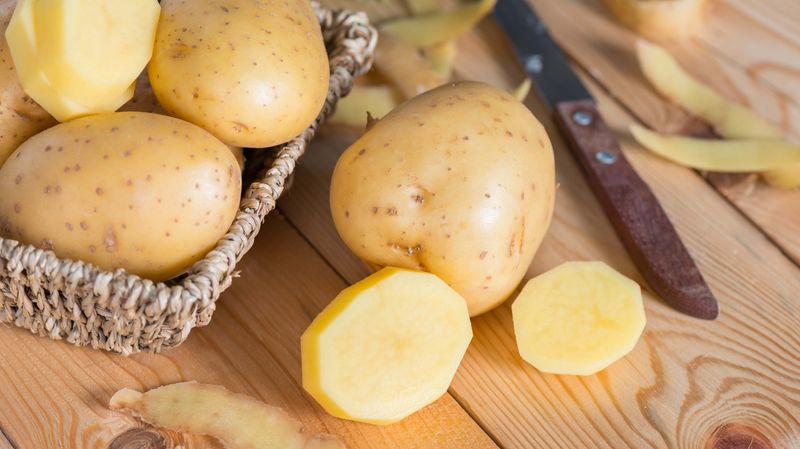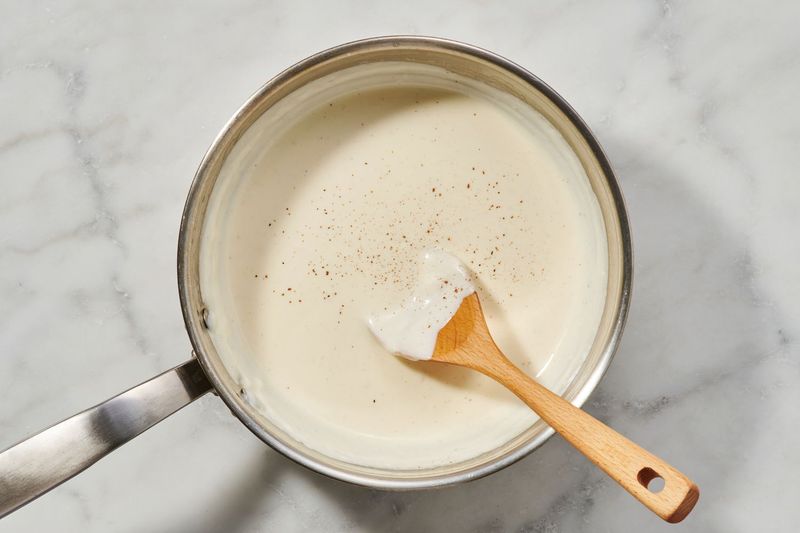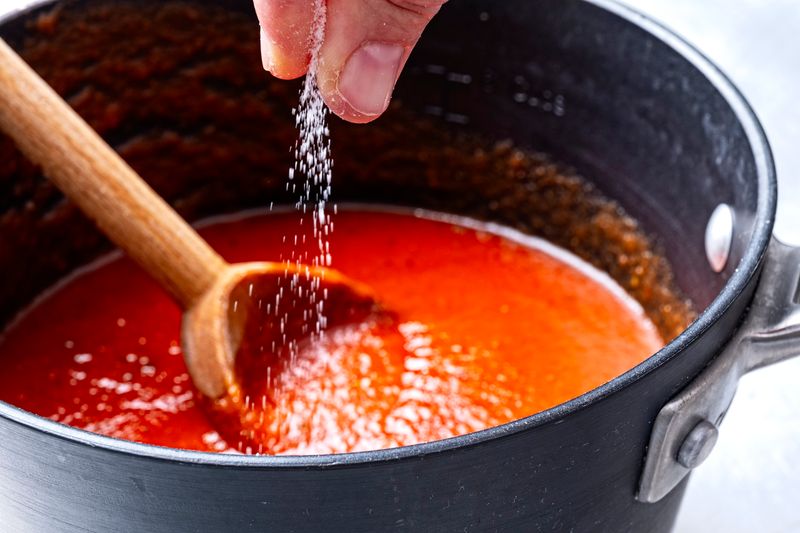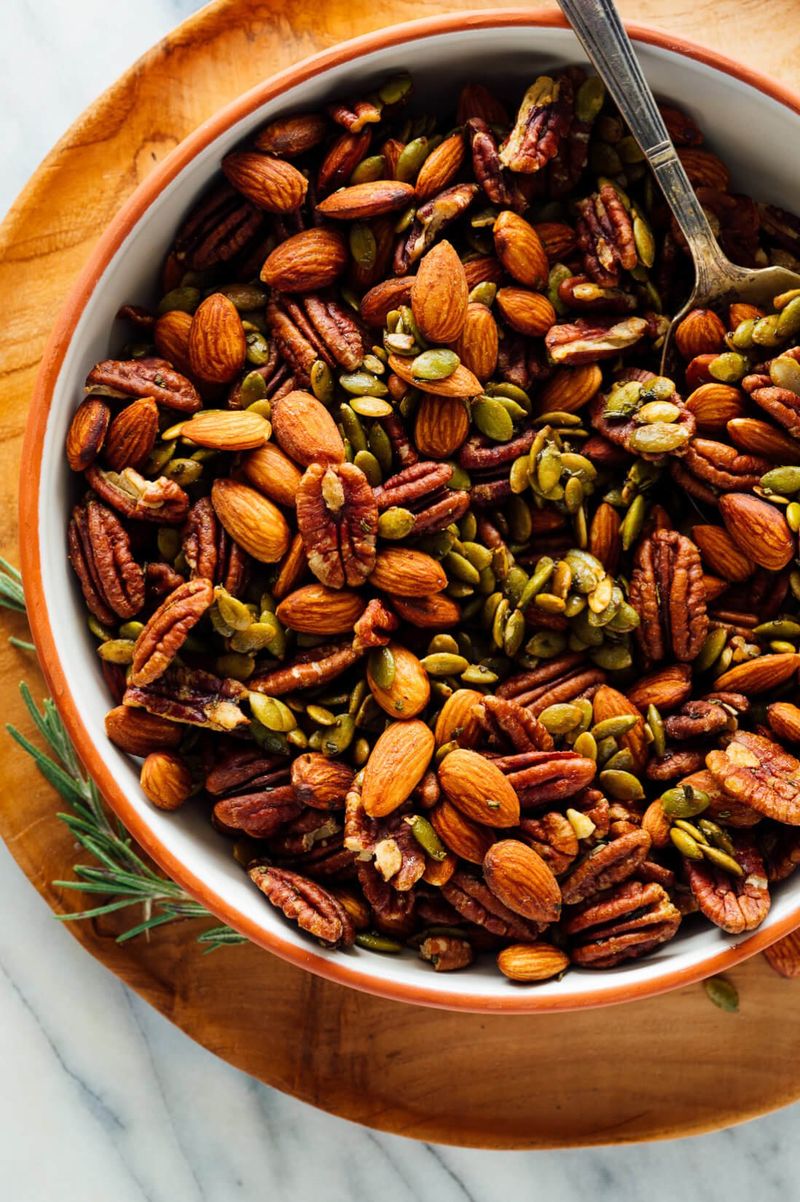So, you’re in the kitchen, channeling your inner culinary genius—and then it happens. Maybe the salt shaker lid fell off mid-shake, or you got a little too confident with the seasoning. Suddenly, your masterpiece tastes like it took a swim in the ocean.
Don’t panic, and definitely don’t toss it out. Oversalting is a common mistake, but it’s also one of the most fixable.
In this guide, we’ll walk you through seven clever, kitchen-tested ways to tone down the salt and salvage your dish.
From strategic dilution to flavor-balancing ingredients you already have on hand, these tricks will help bring your meal back from the brink—without sacrificing taste or texture. Whether it’s a soup, stew, sauce, or sauté gone rogue, you’ve got options.
Dilute with Liquid

Ever accidentally seasoned your soup with the Atlantic Ocean? Adding more liquid could be your lifesaver. Whether it’s water, broth, or a splash of wine, increasing the volume of your dish can help balance out the saltiness.
Just be cautious not to overdo it, as you don’t want to lose the dish’s original flavor.
Adjust other seasonings if necessary and keep tasting as you go. This method works best with soups, sauces, and stews where additional liquid won’t ruin the texture.
Remember to simmer for a bit. Give the extra liquid time to integrate the flavors evenly. Experiment with flavors by using complementary liquids to add depth while reducing saltiness.
Add a Starchy Base

Picture this: your stew is saltier than the Dead Sea. Introducing a starchy base can absorb some of that pesky sodium. Potatoes, rice, or pasta are excellent choices.
Toss in a peeled potato to simmer with your dish. It acts like a sponge, soaking up excess salt without altering the flavor much. Rice or pasta can also disperse the saltiness, especially in liquid-based dishes.
For a creative twist, serve your salty stew over a bed of bland pasta or rice. This not only reduces salt concentration but also makes for a hearty meal. Keep tasting and adjusting to make sure the balance is just right.
Incorporate Dairy

Is your dish salty enough to make a cow thirsty? Dairy to the rescue! Cream, milk, or yogurt can tone down the salt while adding a rich, smooth texture.
A splash of cream in your curry or a dollop of yogurt in your stew can do wonders for a salty mishap. Besides neutralizing salt, dairy adds a velvety finish that’s both satisfying and sophisticated.
Be mindful of consistency. You don’t want to transform your dish into a soup unless that’s your goal. Time to savor the creamy goodness while keeping the saltiness in check!
Sweeten the Pot

When life gives you lemons—or salty dishes—consider sweetening the pot. A pinch of sugar or a drop of honey can counterbalance saltiness like a charm.
It’s not about making your dish sweet, but rather balancing flavors. Be cautious: too much sugar and you’ve got a dessert on your hands, not a savory meal.
Taste as you go and find that perfect harmony between sweet and salty. This trick is especially useful with tomato-based dishes, where sugar naturally enhances flavor without overpowering.
Introduce an Acid

Here’s a zesty fact: acids like lemon juice or vinegar can neutralize saltiness. A splash can brighten flavors while keeping that salt in check.
Adding acid creates a new dimension of taste without eclipsing the original flavors. It’s perfect for dishes that can handle a bit of tang, such as sauces and salads.
Experiment with different acids depending on the cuisine. A touch of vinegar for an Italian dish or lemon juice for a Mediterranean flair. Your taste buds will thank you for the refreshing twist!
Incorporate Bitter Greens

Imagine the freshness of bitter greens like arugula or kale balancing out a salty stew. These greens not only add texture but also a contrasting bitterness that can tone down the saltiness.
Chop them finely and mix into the dish toward the end of cooking. The greens wilt slightly, integrating their distinct flavor without overpowering the dish.
This method adds a garden-fresh appeal to your meal, making it both healthier and more visually appealing. It’s a nature-inspired way to bring harmony to your recipe.
Add a Nutty Element

Nuts can be a surprising ally in combating saltiness. Consider crushing a handful of almonds or walnuts and sprinkling them over your salty dish.
These nuts bring a rich, nutty flavor and a delightful crunch, adding depth and complexity. The slight bitterness of the nuts can counteract the excess salt, providing balance.
Besides, the texture contrast makes the dish more interesting to eat. This method is not just a fix—it’s a flavor enhancer, turning a mistake into a gourmet experience.
Leave a comment